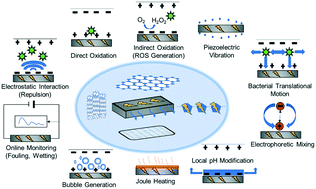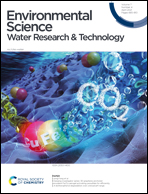Synthesis, fabrication, and mechanism of action of electrically conductive membranes: a review
Abstract
Membrane technology has been used in desalination and wastewater treatment due to its many advantages such as ease of operation, smaller footprint, higher efficiency, and lower chemical consumption over conventional technologies. However, there are still some challenges associated with membrane technology, viz. fouling, selectivity to uncharged contaminants in pressure-driven membranes, and energy consumption without compromising the water quality. These necessitate the need for new generation membranes with better selectivity with antifouling capability. Advancements in the field of materials science and membrane preparation processes are giving new possibilities for mitigating these problems of conventional membrane filtration with the use of electroconductive membranes or ECMs. ECMs combine the separation effect of the membrane with the electrical effects of the conducting elements. Over the last few years, ECMs have been applied using different conductive elements such as graphene, conductive polymers, carbon nanotubes (CNTs), etc. ECMs is a rapidly growing field, and they have shown potential for desalination and wastewater treatment. Therefore, there is a need for an updated review focusing on the different aspects of ECMs. Moreover, there is a lack of reviews on ECM synthesis and fabrication, application, and action of mechanism in the broad range of membrane filtration, such as pressure-driven, thermal driven, and osmotically driven membrane processes. Thus, this review is focused on the synthesis and fabrication of ECMs, conductive elements used, and antifouling mechanisms of ECMs under positive, negative, and alternate biases. The important ECM studies so far conducted in commonly used pressure-driven membrane processes, along with the recent advancements made in the field of FO and MD using ECM have also been reviewed. Moreover, this review provided the current status of the energy and cost aspects of ECMs along with the current challenges and possible future development paths for the ECMs.

- This article is part of the themed collections: Best Papers of 2021 from RSC’s Environmental Science journals and Best Papers 2021 - Environmental Science: Water Research & Technology


 Please wait while we load your content...
Please wait while we load your content...